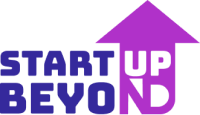
Did you know? 90% of startups fail, but the ones that succeed often follow a similar path. Whether it’s Airbnb, Uber, or Dropbox, every big company today started as just an idea. But how does an idea turn into a multi-million (or billion) dollar business?
Building a startup is like setting out on an adventure. There’s excitement, struggle, and a lot of lessons along the way. From that first spark of an idea to launching, scaling, and potentially going public, every stage comes with its own challenges and rewards.
Let’s walk through the key stages of a startup’s lifecycle—what they involve, the main challenges, and how some of today’s biggest companies made it through. Whether you’re dreaming of launching your own business or just curious about how startups grow, this guide will give you a clear roadmap from idea to IPO.
The Idea Stage – Where It All Begins

Every startup starts with a problem that needs solving. Maybe it’s something you’ve struggled with personally, or perhaps you see an opportunity to improve how things are done.
Take Dropbox, for example. Drew Houston kept forgetting his USB drive, so he built a cloud-based file storage solution. That small frustration turned into a billion-dollar business.
How to Validate Your Idea:
- Talk to potential customers – Are people actually struggling with this problem?
- Research competitors – Does a solution already exist? If so, how can you improve it?
- Check market demand – According to CB Insights, 42% of startups fail because there’s no market need for their product.
Don’t fall in love with your idea—fall in love with solving a real problem.
Validation – Testing the Waters

Once you’ve got an idea, it’s time to see if people want it before you invest too much time and money. This is where a Minimum Viable Product (MVP) comes in—a simple version of your product that solves the core problem.
Ways to Validate Your Idea:
- Landing pages & pre-orders – See if people are willing to sign up before you launch.
- Crowdfunding – Platforms like Kickstarter and Indiegogo help test demand before building.
- Pilot programs – Offer your product to a small test group and collect feedback.
Airbnb’s founders didn’t start with a fancy platform. They rented out air mattresses in their apartment to see if people would pay to stay in someone else’s home. That small test gave them the confidence to build the business we know today.
According to Startup Genome, 70% of successful startups pivot at least once based on feedback.
Test before you build. The best startup ideas evolve based on real-world feedback.
Launch – Making It Official

Once you’ve validated your idea, it’s time to launch. But launching isn’t just about releasing your product—it’s about getting early customers and making noise.
How to Launch Successfully:
- Start with a niche audience – Don’t try to attract everyone at once. Focus on your ideal users first.
- Leverage social proof – Collect testimonials, case studies, and success stories.
- Optimize your messaging – Make sure you’re clearly explaining why your product is valuable.
Slack was originally built as a communication tool for a gaming company. But when they launched it publicly, they realized it had broader appeal. By listening to their users and adapting their messaging, they turned it into a leading business tool.
According to AngelList, 80% of investors consider traction a key factor before funding a startup.
A great product isn’t enough—you need people to know about it and use it.
Growth – Building Momentum

Once your startup has traction, the next challenge is scaling your customer base, operations, and team.
Common Growth Mistakes:
- Scaling too fast – Expanding too quickly before product-market fit can kill a startup.
- Burning cash without a clear strategy – Growth needs to be sustainable, not just fast.
- Ignoring retention – Growth isn’t just about new customers, it’s about keeping existing ones happy.
Uber started small in San Francisco before expanding globally. Their aggressive, city-by-city strategy helped them dominate the ride-hailing industry.
According to McKinsey, startups that scale effectively grow up to 20 times faster than those that don’t.
Growth isn’t just about speed—it’s about scaling in a way that your business can handle.
Scaling – Taking It to the Next Level

Scaling is about expanding without breaking what’s already working. This means hiring smart, optimizing operations, and entering new markets.
Challenges of Scaling:
- Culture dilution – As teams grow, communication can break down.
- Operational inefficiencies – More customers mean more complexity.
- Increased competition – Bigger startups attract bigger competitors.
Zoom’s user base skyrocketed during the pandemic. They had to scale infrastructure, customer support, and security—without sacrificing quality.
Scaling is about efficiency, not just growth.
IPO – The Big Leap

For some startups, an Initial Public Offering (IPO) is the ultimate goal—it means going public and raising significant capital. But it’s not for everyone.
IPO Pros & Cons
- Access to capital – IPOs raise millions (or billions) in funding.
- Increased credibility & brand awareness – Public companies gain more exposure.
- Regulatory burdens – Strict financial reporting requirements.
- Market volatility – Stock prices can fluctuate dramatically.
Snowflake’s IPO raised $3.4 billion, but not every IPO is a success. Companies like WeWork failed to go public due to governance and valuation issues.
According to EY’s Global IPO Trends Report, Q1 2024 saw 287 IPOs globally, raising $23.7 billion.
An IPO is a big milestone, but it’s not the only exit strategy. Startups can also consider acquisitions or private equity buyouts.
Final Thoughts: The Startup Journey is Never Straightforward

Building a startup is tough, unpredictable, and full of challenges—but it’s also one of the most rewarding things you can do.
Key Lessons:
- Start with a problem worth solving
- Validate before you go all in
- Growth is about sustainability, not speed
- Scaling requires efficiency and culture-building
- An IPO is one of many paths to success
Whether you’re just starting out or scaling your startup, remember: every billion-dollar company started as an idea. Your startup could be next.



